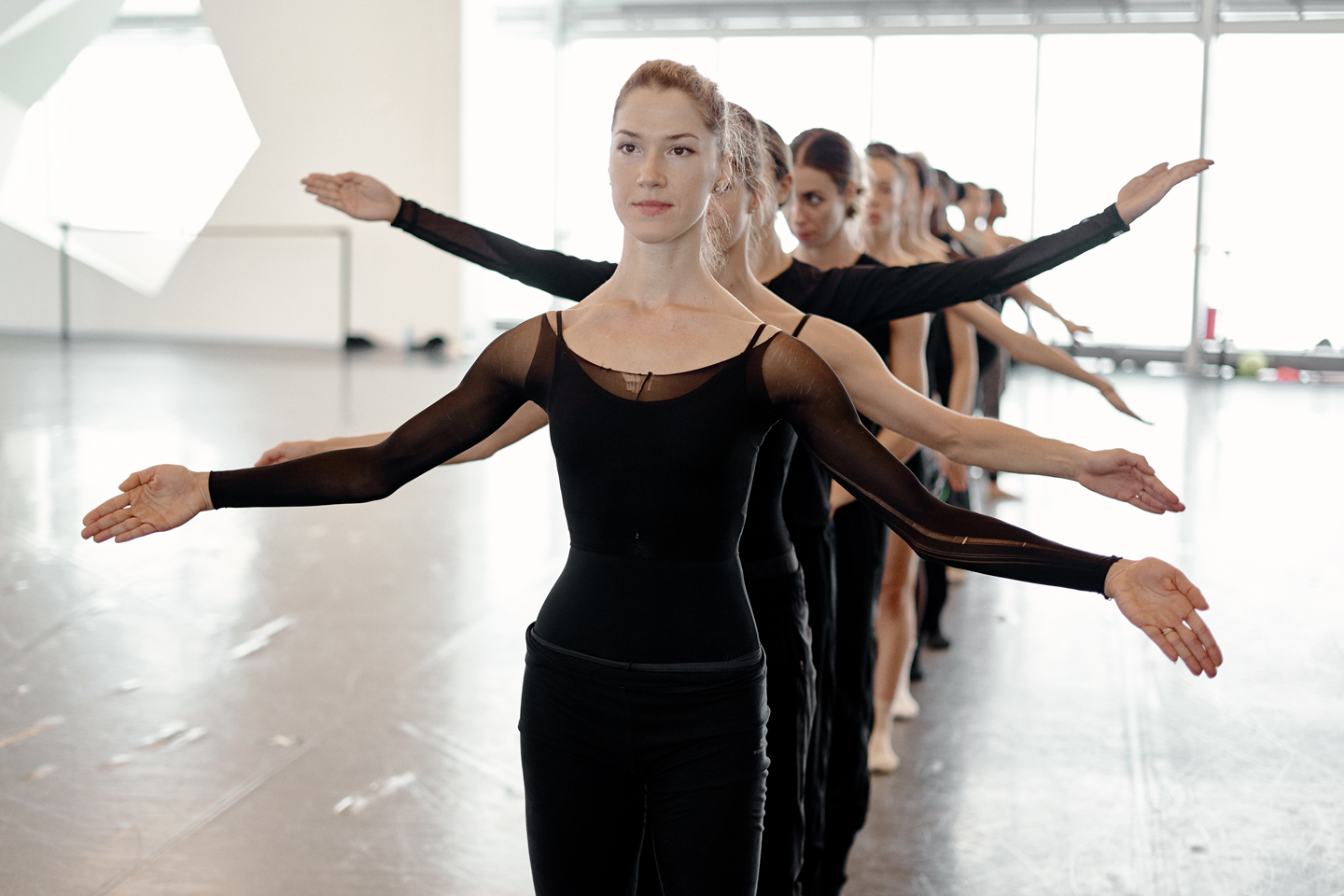

By Edward Clug


Experience the intensity and passion of Carmina Burana, a prodigious contemporary dance spectacle orchestrated by the talented Romanian choreographer Edward Clug. This masterful interpretation of a 20th-century iconic musical piece, by German composer Carl Orff. promises an unforgettable and exhilarating experience. With over 150 artists on stage, including dancers, musicians, choristers, and solo singers, this ballet offers a spectacle where the power and beauty of music merge to celebrate life in all its splendour. A true ode to life!
With Carmina Burana, choreographer Edward Clug revisits a major 20th century work by German composer Carl Orff. This “scenic cantata” - one of the most celebrated in choral singing - is adapted from 24 medieval poems. Its world famous first movement O Fortuna evokes the World's destiny while humanity is powerless in facing its uncertain future. The irresistible energy emanating from this work continues to fascinate.
The ballet follows the structure of the composition, based on the concept of the circle : the Wheel of Fortune, embodying the cycle of existence, made up of joy, bitterness, worry and hope. Based on this central theme, choreographer Edward Clug has imagined an immense circle overhanging the stage, an orbit drawing dancers into it, like solitary satellites – attracted as though by an invisible magnet – and holding some of them at its center. The powerful breath of Carmina Burana is a bearer of love, of awakening and of constant renewal. Borne by the formidable energy of the group, the passion of the chorus and soloists, the power of the orchestra and the timeless beauty of the score, this piece centres on human beings in their most visceral dimension: legacy and longevity.
'' A piece of great beauty. The dancers are charismatic, hypnotizing (…).''
Eugénie Lépine-Blondeau, Radio-Canada

Powerful scores by composers Carl Orff and Wolfgang Amadeus Mozart will be carried by the solo voices, choir and Les Grands Ballets Orchestra.
 Photo: Sasha Onyshchenko | Dancer: Tetyana Martyanova
Photo: Sasha Onyshchenko | Dancer: Tetyana Martyanova
When Carl Orff composed Carmina Burana, in 1935, he could never have imagined that this “scenic cantata” inspired by medieval poems would earn the universal popularity that it did, eclipsing all the rest of his output.
To this day, Carmina Burana has remained one of the pieces in the classical repertoire best-known to the general public, largely thanks to the exposure of its initial chant, O Fortuna, in motion pictures – in Excalibur, among other films.
It was in 1803 that a mysterious manuscript was discovered in the Benedictine monastery of Benediktbeuern, in Bavaria. It consisted of a collection of sacred and secular poems and texts in Latin, German and old French that spoke of love, spring and such pleasures of life as fine food, wine and partying.
For his cycle, Carl Orff chose 24 of these poems and grouped them in major sections with their particular settings. The introduction, O Fortuna, invokes the goddess of fortune in Roman mythology, who returns in the conclusion. Cruel empress of the world, Fortuna is depicted as a pitiless wheel that turns and draws her subjects into a destiny over which they have no control.
The central parts unfold in springtime, in the meadow, at the tavern and in the court of love. They involve multiple scenes expressing the joys and sorrows of existence, and present love from the masculine and feminine points of view. The result is a generally festive atmosphere, often tinged with humor. We need only think of the bawdy drinking songs and the swan roasting on a spit who bemoans its fate.
At the musical level, Carl Orff did not attempt to imitate or reimagine medieval music. Rather, he took advantage of it to reinvent himself. To that point, his compositions had been influenced by the postromantic music of Richard Strauss and his contemporaries. With Carmina Burana, he saw the opportunity to develop a unique style, based on simple rhythms and harmonies, one that contrasted sharply with the music of his time.
Audiences immediately took to Carmina Burana, starting with its premiere at Frankfurt-on-Main; the work reaches out to human beings in their most fundamental and primitive dimensions. This should not come as a surprise, since Carl Orff, who revolutionized musical teaching by reconnecting with the physical and dance aspects of music, conceived a visceral and spectacular work that has inspired artists in all disciplines since its creation.
In the world of dance, Carmina Burana has seen many adaptations throughout the years. Les Grands Ballets staged choreographer Fernand Nault’s version in 1966 and presented it as part of the World Fair of Montreal a year later; the show became an overnight sensation. Many tours and performances followed, making Carmina Burana one of the most celebrated pieces from Les Grands Ballets’ repertoire.
ABOUT THE SHOW
Duration: 65 minutes
LES GRANDS BALLETS
